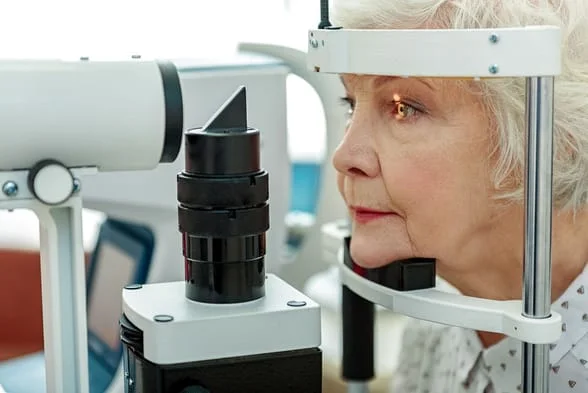If you are over the age of 40, there is a good chance that your close-up vision is no longer perfect. People over 40 often develop a condition called presbyopia. This condition is caused when the lens of your eye loses its elasticity, which is common with age. When that happens, you will need to have multifocal lenses to treat your nearsightedness. However, if you do not like how multifocal lenses looks on you, Richardson Eye Associates in Richardson, TX offer progressive lenses as an alternative.
What Are Progressive Lenses?
Basically, progressive lenses are no-line multifocal eyeglass lenses. They look just like your single vision lenses, but they make it possible to see clearly at all distances. Progressive lenses contain two different strengths. If you need a trifocal, a third strength can be added to the lens.
How Do Progressive Lenses Work?
Bifocal lenses have two different prescription strengths. The strength to see objects in the distance is at the top, and the strength to see close-up is at the bottom. There is a very noticeable line in between the two, which makes it easy to know where to look to focus on what you are trying to look at. Progressive lenses have a more advanced design. The prescriptions change gradually.
What Are the Benefits of Progressive Lenses?
If you find that you need correction for your close-up vision, you should look into progressive lenses. They have benefits that you cannot get from a traditional bifocal lens.
- Appearance: Progressive lenses don't have a line in the middle of the glasses. This means that nobody will know that you have a multi-focal prescription.
- Clear Vision At All Distances: Bifocals have just two prescriptions. Progressive lenses have many powers between the two prescriptions. Because the powers change so gradually, a number of powers are included. This means that you will be able to see objects at every distance clearly.
- No “Image Jump”: Because there is a drastic change between the two powers in bifocal lenses, the images tend to jump. There will be a very noticeable change in your vision when your eyes move from the top to the bottom of the lens. Because progressive lenses change very gradually, you won't need to worry about the image jump.
How Do You Get Progressive Lenses?
You will first need to schedule an appointment with our optometrists for an eye exam. During your exam, our optometrists will check your eyes for signs of vision problems. If you are having a difficult time seeing at any time during your exam, our optometrists may recommend progressive lenses to help with your vision problem.
If you are over the age of 40 and you find that it is difficult to see close-up clearly, there is a good chance that you have presbyopia. Rather than going with lined bifocal lenses, you should consider progressive lenses. At Richardson Eye Associates in Richardson, TX, our optometrists can give you an eye exam to determine your prescription. Just because you are over 40 and are suffering from a common age-related vision problem, it doesn't mean that the world needs to know. Call our optometry practice at (972) 231-3439 to schedule an appointment.


